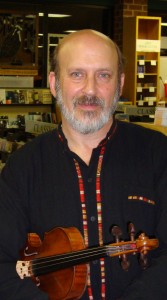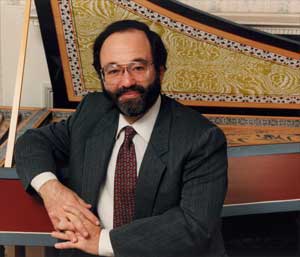VIVALDI BY CANDLELIGHT, First Presbyterian Church, Dec. 6
Mixing the familiar with the obscure, this year’s edition of the annual Vivaldi by Candlelight concert – a benefit for the Utah Council for Citizen Diplomacy – featured a delightful selection of works by the concert’s namesake, along with Francesco Geminiani and Carlos de Seixas, and culminating with J.S. Bach’s magnificent Concerto No. 3 in D major for Harpsichord and Strings, BWV 1054.
Music director and conductor Gerald Elias always knows how to pick works that make each concert interesting and different — and unique. This year, he found a pair of pieces that are unusual in one way or another, with one of them ostensibly receiving its world premiere at Saturday’s concert.
Geminiani, while not as well known today as Vivaldi, Bach or Handel, nevertheless gets his due in the recording studio and in the concert hall. But the piece that Elias and the Vivaldi Virtuosi played, the Concerto No. 5 in B flat major, is an oddity. Originally written as a violin sonata, it was arranged as a concerto by one of Geminiani’s contemporaries, the composer Charles Avison. The manuscript of the concerto disappeared, only to recently turn up in a house in London that was being renovated. And as far as anyone knows, it had never been performed in its concerto form until Saturday.
The concerto is a wonderfully melodic piece with a prominent violin part, which concertmaster Hasse Borup played with beautifully turned phrases and expressions. The string ensemble offered solid support and Elias brought out the score’s nuances with his perceptive direction.
The other rediscovered gem on the program was de Seixas’ Concerto in A major for Clavier and Strings. The Portuguese de Seixas’ music is almost completely unknown today not because the manuscripts went missing, but because most of them were destroyed in a devastating earthquake that hit Lisbon in 1755.
The concerto is a charming work, full of luminous lyricism that Elias and the ensemble brought to the fore. Soloist was Mark Kroll, whose exquisite harpsichord playing was infused with finely crafted expressiveness and emotional warmth.
Kroll is one of today’s foremost harpsichordists. And while he gave a radiant account of de Seixas’ work, it was in the Bach concerto where he could put his virtuosity and musicianship on full display.
The Bach is a substantial work, better known today in the composer’s own arrangement for violin in E major, but the harpsichord original is one of the most magnificent keyboard concertos from the period. And Kroll made the most of it. His playing was wonderfully articulated and defined, with a wealth of expression and finely molded lyricism.
The range and depth of expressions that Kroll brought to his part were mirrored by Elias and the ensemble, They, too, played with shimmering lyricism that captured the very essence of the work.
Rounding out the concert was another work by Geminiani , the Concerto in C minor, op. 2, no. 1, as well as two sinfonias by Vivaldi, in C major (RV 192a) and in G major (RV 146), both of which were played with cleanly defined phrasings and articulation.
There was also an encore — a reprise of the first movement of Vivaldi’s Sinfonia in C major, this time without Elias conducting.


